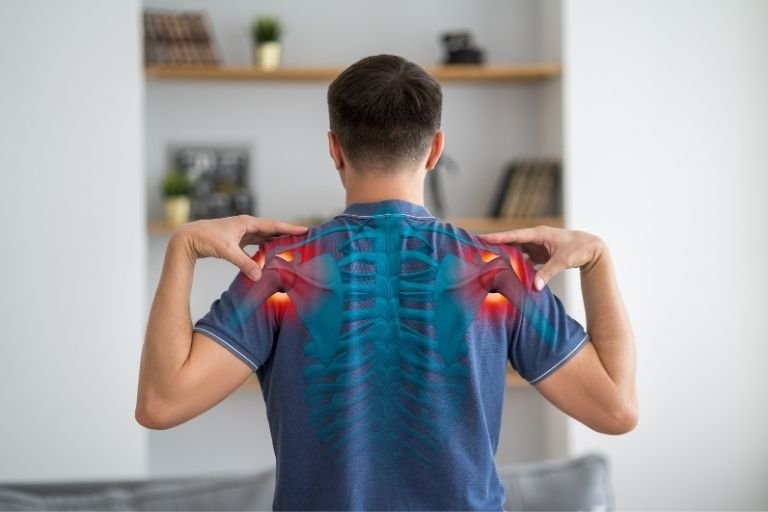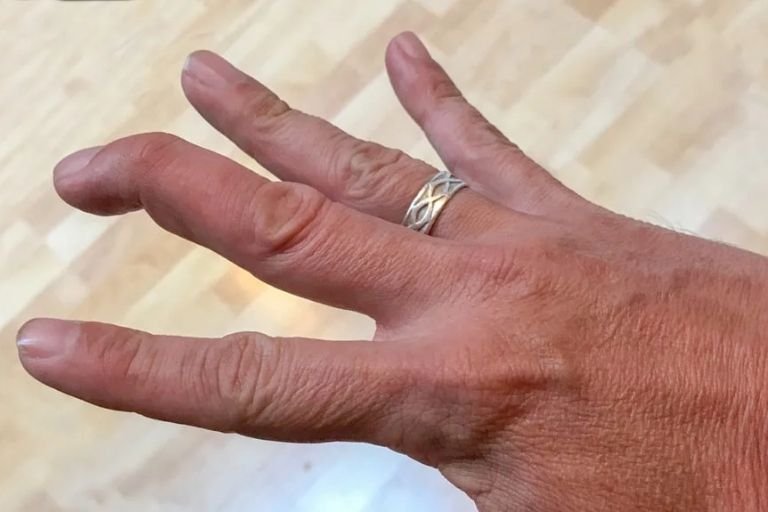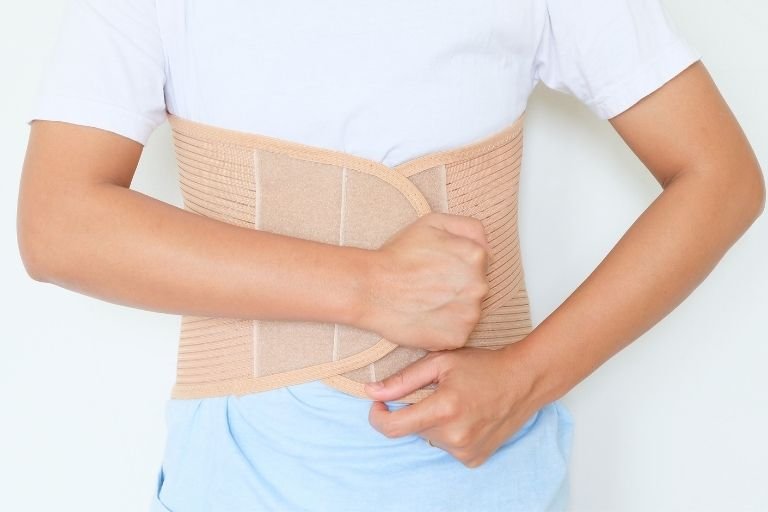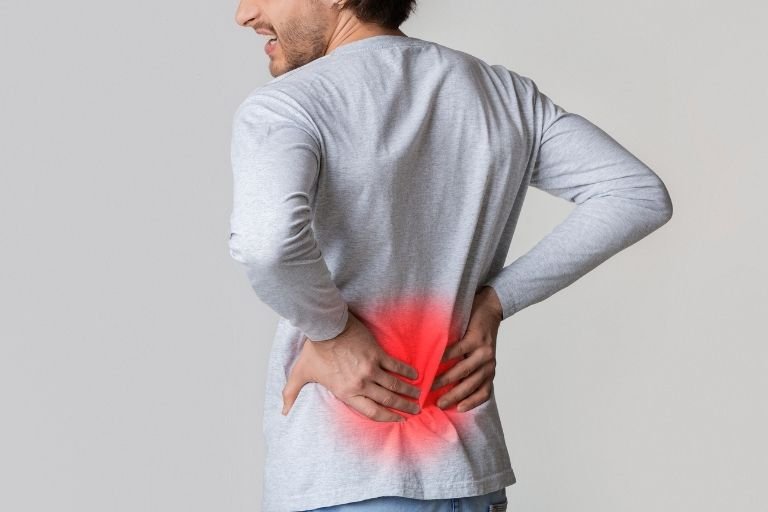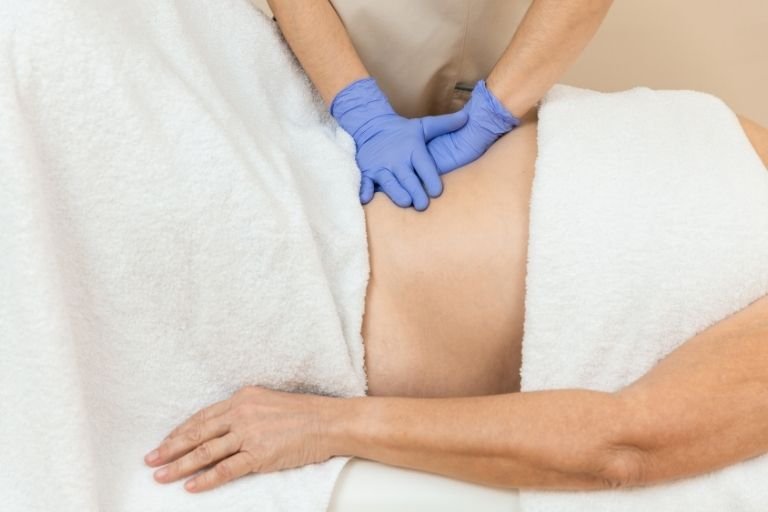- Fitwell Physiotherapy
Disc Prolapse

Disc prolapse, also known as herniated or slipped disc, occurs when the soft inner material of a spinal disc leaks out through a tear in the tougher outer layer. This condition can cause pain, numbness, and weakness, primarily in the back and legs. Here’s a detailed overview of disc prolapse, including symptoms, causes, when to see a physiotherapist, risks, prevention strategies, and treatments:
Please submit your details below.
Symptoms:
- Pain: Usually felt on one side of the body, radiating down the leg (sciatica), or localized in the lower back.
- Numbness and tingling: Along the affected nerve pathway, often extending into the buttocks, legs, and feet.
- Muscle weakness: Particularly in the muscles that the affected nerve controls, leading to difficulty in lifting the foot or toe, or weakness in the knees.
- Changes in reflexes: Diminished or exaggerated reflexes, depending on the nerves affected.
- Difficulty in walking or standing: Especially if the prolapse presses on the nerves that control these functions.
Causes:
- Age-related degeneration: As people age, the spinal discs lose water content and become less flexible, making them more prone to herniation.
- Trauma or injury: Sudden, forceful movements or accidents can cause tears in the disc’s outer layer, leading to herniation.
- Genetics: Some individuals may inherit traits that predispose them to disc problems.
- Poor posture and body mechanics: Improper lifting techniques or consistently poor posture can increase the risk of disc prolapse.
When to See a Physiotherapist:
- Persistent pain: If back or leg pain persists for more than a few days and is not relieved by rest or over-the-counter pain medications.
- Numbness or weakness: If you experience numbness or weakness in the legs or feet, especially if it’s accompanied by loss of bladder or bowel control, seek immediate medical attention.
- Difficulty in performing daily activities: If the pain or symptoms interfere with your ability to perform daily tasks or affect your quality of life.
Risks:
- Nerve damage: Prolonged pressure on the spinal nerves can lead to permanent nerve damage if not addressed promptly.
- Chronic pain: If left untreated, disc prolapse can result in chronic pain and disability.
- Limited mobility: Severe cases of disc prolapse may lead to difficulty in walking or performing routine activities.
How to Prevent:
- Maintain a healthy weight: Excess weight can put strain on the spine and increase the risk of disc prolapse.
- Practice good posture: Maintain proper posture while sitting, standing, and lifting heavy objects to reduce strain on the spine.
- Exercise regularly: Strengthening the core muscles and maintaining flexibility through regular exercise can help support the spine and reduce the risk of disc prolapse.
- Use proper lifting techniques: Bend your knees and keep your back straight when lifting heavy objects to avoid putting excessive pressure on the spine.
Treatments:
- Physiotherapy: A physiotherapist can design a tailored exercise program to strengthen the muscles supporting the spine, improve flexibility, and alleviate pain.
- Medications: Nonsteroidal anti-inflammatory drugs (NSAIDs), muscle relaxants, and pain medications may be prescribed to manage pain and inflammation.
- Steroid injections: Injections of corticosteroids directly into the affected area can provide temporary relief from pain and inflammation.
- Surgery: In severe cases where conservative treatments fail to provide relief or if there’s significant nerve compression, surgical intervention may be necessary to remove the herniated portion of the disc.
- Lifestyle modifications: Avoiding activities that exacerbate symptoms, using ergonomic furniture, and incorporating relaxation techniques into daily routine can help manage symptoms and prevent recurrence.
Disc prolapse can significantly impact daily life, but with prompt intervention, appropriate treatment, and lifestyle modifications, many individuals can experience relief from symptoms and regain function. Regular exercise, maintaining a healthy weight, and practicing good posture are key components of prevention and long-term management. If you suspect you have a disc prolapse or are experiencing persistent back or leg pain, consult a healthcare professional for an accurate diagnosis and personalized treatment plan.
Frequently Asked Questions
Symptoms of a prolapsed disc can vary depending on the location and severity of the herniation but often include:
- Pain in the back or neck
- Radiating pain in the arms or legs (sciatica when it affects the lower back)
- Numbness or tingling in the affected areas
- Muscle weakness
- Difficulty in movement or reduced range of motion
Treatment for disc prolapse can range from conservative to surgical options, depending on the severity and response to initial treatments:
- Conservative Treatments: Rest, physical therapy, anti-inflammatory medications, pain relievers, and corticosteroid injections.
- Lifestyle Modifications: Avoiding heavy lifting, maintaining good posture, and engaging in exercises to strengthen the back and core muscles.
- Surgical Treatments: If conservative treatments fail or symptoms worsen, surgical options such as microdiscectomy, laminectomy, or spinal fusion may be considered to relieve nerve compression and stabilize the spine.
While not all cases of disc prolapse can be prevented, several measures can reduce the risk:
- Regular Exercise: Strengthening core muscles to support the spine.
- Proper Lifting Techniques: Using legs rather than the back to lift heavy objects.
- Good Posture: Maintaining proper alignment while sitting, standing, and sleeping.
- Healthy Weight: Maintaining a healthy weight to reduce stress on the spine.
- Avoid Smoking: Smoking can contribute to disc degeneration.
Taking these preventive steps can help maintain spinal health and reduce the likelihood of disc prolapse.






















